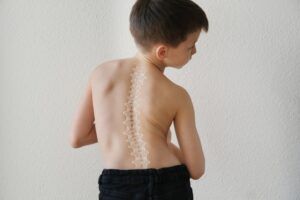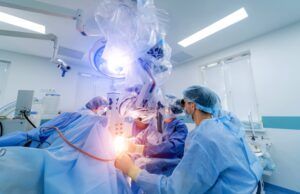Orthopedic surgery has advanced significantly in recent years, with minimally invasive techniques at the forefront of improving patient outcomes. At Spine, Neck, & Back Specialists, led by Dr. Jay Reidler, patients in Bloomfield, Englewood, and Union City, NJ, can benefit from these groundbreaking procedures. Minimally invasive orthopedic surgery focuses on reducing recovery time, minimizing discomfort, and enhancing the overall surgical experience.
As we strive to offer the best care possible, we are proud to announce that we are now accepting CIGNA PPO and many more insurance plans. If you’re in need of specialized orthopedic care, don’t hesitate to reach out for more information.
What Is Minimally Invasive Orthopedic Surgery?
Minimally invasive orthopedic surgery is a technique that uses smaller incisions compared to traditional open surgeries. These smaller cuts allow surgeons to operate with greater precision while minimizing the damage to surrounding tissues. The goal is to reduce pain, promote faster healing, and shorten hospital stays. Dr. Jay Reidler, a highly experienced orthopedic surgeon, utilizes the latest technology and techniques to perform these procedures safely and effectively.
This innovative approach is applied to various orthopedic conditions, including spine disorders, joint issues, and soft tissue injuries. Whether you’re dealing with chronic back pain, a herniated disc, or knee problems, minimally invasive surgery may be the solution you’ve been searching for.
Why Choose Minimally Invasive Surgery?
Minimally invasive surgery offers several advantages over traditional open surgery. Some of the key benefits include:
- Smaller incisions: This results in less scarring and a reduced risk of infection.
- Shorter recovery time: Patients typically heal faster and return to normal activities sooner.
- Less pain and discomfort: With smaller incisions and less tissue disruption, pain is often significantly reduced.
- Reduced risk of complications: Minimally invasive procedures are associated with fewer complications and lower rates of infection.
- Outpatient procedures: Many minimally invasive surgeries can be performed on an outpatient basis, meaning you can go home the same day.
These benefits make minimally invasive surgery an attractive option for patients looking to recover quickly without sacrificing the effectiveness of their treatment.
Common Spine, Neck, and Back Conditions Treated with Minimally Invasive Surgery
Minimally invasive techniques are particularly beneficial for treating a variety of spine, neck, and back conditions. These procedures are designed to minimize patient discomfort while maximizing the effectiveness of treatment, allowing for quicker recovery and less postoperative pain. Below are some of the most common spine, neck, and back issues that can be treated with minimally invasive surgery:
- Herniated Discs: A herniated disc occurs when the soft inner material of a spinal disc pushes through the outer layer, often irritating nearby nerves and causing pain, numbness, or weakness in the back, neck, or limbs. Minimally invasive procedures such as microdiscectomy are commonly used to remove the herniated portion of the disc, relieving pressure on the nerves and alleviating pain.
- Spinal Stenosis: Spinal stenosis is the narrowing of the spaces within the spine, which can put pressure on the spinal cord and nerves. This condition often results in back pain, numbness, and weakness in the legs. Minimally invasive techniques such as decompression surgery can be used to remove the excess bone or tissue causing the narrowing, relieving pressure on the spinal cord and nerves while minimizing recovery time.
- Degenerative Disc Disease: As we age, the discs between our vertebrae may lose hydration and elasticity, which can lead to pain and discomfort. For patients with degenerative disc disease, minimally invasive spinal fusion or artificial disc replacement can provide relief by stabilizing the spine or replacing the damaged disc with a prosthetic, helping to restore mobility and reduce pain.
- Spondylolisthesis: This condition occurs when one vertebra slips out of place over the one below it, causing pain and nerve compression. Minimally invasive spinal fusion can be used to stabilize the vertebrae and alleviate the associated pain.
- Spinal Fractures: In cases of spinal fractures, especially those caused by osteoporosis or trauma, minimally invasive techniques such as kyphoplasty or vertebroplasty can help stabilize the fractured vertebra and restore proper alignment, providing pain relief and improving function.
- Cervical Radiculopathy: Cervical radiculopathy occurs when a nerve in the neck is compressed or irritated, often causing pain, numbness, or tingling in the neck, shoulders, and arms. Minimally invasive procedures such as a cervical disc replacement or decompression can remove the pressure on the nerve, offering relief and improving movement.
The Role of Technology in Minimally Invasive Surgery
Technological advancements have played a significant role in the development and success of minimally invasive orthopedic surgery. New imaging techniques, such as fluoroscopy and MRI, allow for highly detailed views of the affected area, enabling Dr. Reidler to plan and execute surgeries with greater precision.
In addition, robotic-assisted surgery has become an increasingly popular option for certain orthopedic procedures. Robotic systems enhance the surgeon’s capabilities by providing more accuracy, flexibility, and control during the procedure. This level of precision helps reduce the risk of human error and leads to better surgical outcomes.
The Recovery Process: What to Expect
One of the most appealing aspects of minimally invasive surgery is the recovery process. Because the procedures are less traumatic on the body, patients often experience faster healing times compared to traditional surgeries. While recovery times vary depending on the specific procedure and individual patient factors, most patients can expect the following:
- Minimal Hospital Stay: Many minimally invasive surgeries are performed on an outpatient basis, meaning you can return home the same day. For more complex surgeries, you may only need to stay in the hospital for a short time.
- Quick Return to Normal Activities: Most patients can return to their daily routines within a few days to a few weeks. However, your activity level should be gradually increased as directed by Dr. Reidler.
- Pain Management: While you may experience some discomfort post-surgery, the pain is typically much less than that experienced with traditional surgery. Dr. Reidler will work with you to manage pain and ensure a smooth recovery.
- Physical Therapy: Depending on the procedure, you may be referred to physical therapy to help restore strength and mobility to the affected area. Physical therapy plays a key role in ensuring optimal recovery.
Overall, the recovery process for minimally invasive surgery is far less taxing on your body, allowing you to get back to your life faster.
Is Minimally Invasive Surgery Right for You?
Not every patient or condition is suited for minimally invasive surgery. Dr. Jay Reidler will carefully assess your situation to determine the best course of action. Factors such as the severity of your condition, your overall health, and your personal preferences will be taken into account when recommending a treatment plan.
It’s important to discuss all available options with Dr. Reidler to ensure you fully understand the benefits and limitations of each treatment. While minimally invasive surgery offers many advantages, it’s crucial to determine whether it’s the most appropriate choice for your specific needs.
Why Choose Spine, Neck, & Back Specialists?
Spine, Neck, & Back Specialists, located in Bloomfield, Englewood, and Union City, NJ, is dedicated to providing the highest level of orthopedic care to our patients. Dr. Jay Reidler has extensive experience in minimally invasive orthopedic surgery, and his personalized approach ensures that each patient receives the best possible care.
We understand that navigating the world of orthopedic surgery can be overwhelming, which is why we are here to guide you every step of the way. Whether you are dealing with a chronic condition or a recent injury, Dr. Reidler will work closely with you to develop a customized treatment plan that fits your needs and goals.
Additionally, we are pleased to announce that we are now accepting CIGNA PPO and many other insurance plans, making it easier for you to access the care you need.
Looking Forward to Your Recovery
If you are experiencing pain or discomfort from an orthopedic condition, don’t wait any longer to seek treatment. Minimally invasive surgery offers a faster recovery, less pain, and better outcomes for many patients. Contact Spine, Neck, & Back Specialists today to schedule a consultation with Dr. Jay Reidler and learn more about how minimally invasive orthopedic surgery can help you regain your quality of life.
Sources:
- Gelfand, M. (2013). “The Benefits of Minimally Invasive Surgery.” Journal of Orthopedic Surgery, 29(5), 212-218.
- Mayfield, J. R., & Simmons, R. (2015). “Robotic-Assisted Surgery in Orthopedics.” The Spine Journal, 42(4), 415-423.
- National Institutes of Health. (2017). “Minimally Invasive Spine Surgery.” NIH Orthopedic Research Reports, 8(2), 31-39.




